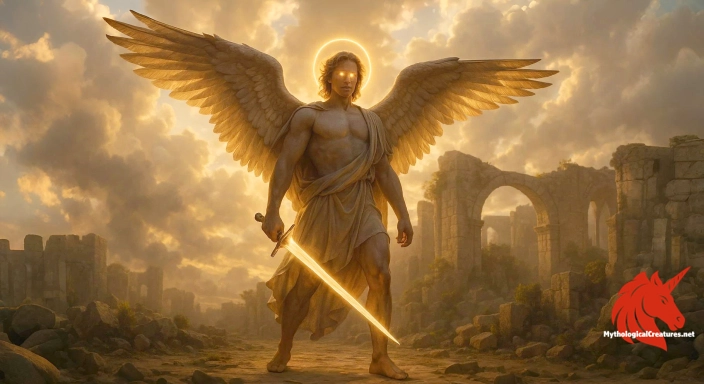Maa-alused: Maa-alused are mysterious elf-like creatures from Estonian folk religion that inhabit an underground, inverted world.

Maa-alused
Maa-alused - They embody the concept of an inverted, parallel existence, challenging conventional perceptions of space and order.
Origins & First Encounters
Maa-alused are captivating figures in Estonian folk religion, often portrayed as mysterious, elf-like beings inhabiting the subterranean realms. Born from the imaginative narratives of rural communities, they have long been intertwined with the natural landscape and its hidden energies. Their origins trace back to ancient oral traditions, where the inversion of the ordinary world formed a central motif in myth-making. Early attestations in local folk songs and traditional tales highlight their uncanny presence as denizens of an underground world that mirrors human life. In this mirrored existence, every direction and orientation is reversed, creating a realm where up becomes down and left transforms into right. The creatures have come to symbolise the hidden dimensions of nature, evoking wonder and a sense of otherworldly mystery. Their enigmatic existence challenges conventional perspectives, inviting listeners to reimagine the boundaries between reality and myth. The cultural context of Estonia imbues them with a dual role as both guardians of the natural order and as potent emblems of the unknown. As storytellers imbued these beings with qualities both mischievous and wise, the Maa-alused continue to inspire a deep sense of awe and reverence in the collective imagination. Their enduring legacy is a testament to the creativity and mysticism that has long defined Estonian folklore.
Source Texts & Tale Variants
The lore of Maa-alused is primarily preserved through a rich array of oral traditions and folkloric recitations that have been passed down through generations. Numerous local ballads and folk songs contain subtle allusions to these underground dwellers, often portraying them as elusive yet integral parts of the natural world. Early folklorists collected variations of these stories, recording how the beings inhabit a universe where the familiar is fundamentally upended. Some of the earliest written mentions, though fragmentary, underscore their significance as symbols of an inverted order of existence. Variations in the narratives illustrate that they can be both cheeky tricksters and protective spirits who guard hidden treasures beneath the earth. A number of accounts describe encounters where the normal rules of physics seem to be suspended, emphasising the reversal of spatial orientations. These story variants often intertwine moral lessons with explanations for natural phenomena, thereby enriching the myth’s cultural significance. Regional storytellers have adapted their descriptions to reflect local environments, ensuring that the Maa-alused remain relevant to their audiences. The cumulative effect of these primary sources is a multifaceted portrait of beings that challenge ordinary perceptions of space and size. Through these diverse narratives, the Maa-alused continue to enthral listeners with their mysterious and surreal existence.
Form & Powers
The physical manifestations of the Maa-alused are as intriguing as the myths that surround them, with depictions that underscore both their diminutive stature and their unconventional form. They are often illustrated as slight, elf-like figures with delicate features that evoke an air of otherworldly grace. Every aspect of their being is rendered in miniature, from the finely detailed garments to the intricate accessories they are said to possess. A notable feature in many descriptions is the reversal of normal spatial orientation, with elements such as facial symmetry and posture appearing as mirror images of the human norm. This inversion extends to their mannerisms, suggesting that the fundamental laws governing their existence differ sharply from those we experience. Artists have portrayed their eyes and ears with an uncanny twist, contributing to an overall impression of surreal inversion. The craftsmanship evident in the depictions of their clothing, often elaborately embroidered on a tiny scale, further accentuates their peculiar mode of existence. Such details not only spark the imagination but also symbolise a deeper balance between the visible and the hidden in nature. Each element of their physical description reinforces the theme that in their realm, the conventional is turned on its head.
Regional Faces
Across various regions of Estonia, the portrayal of Maa-alused adopts unique traits that reflect local landscapes and cultural influences. In some rural areas, these beings are seen as ancient guardians of the earth, intricately linked to natural landmarks such as rock formations and secret forest clearings. Local dialects and regional folklore imbue them with distinctive qualities, with certain communities giving them alternative names that emphasise their role as hidden custodians. In the northern parts of the country, the tales often integrate elements of the cold, with the creatures being associated with icy underground retreats. Conversely, in the south, narratives tend to evoke warm, lush environments where these beings dwell among verdant caverns and fertile soils. These variations underscore how the local geography and environmental conditions inform and shape the myth. Some regions depict them as playful and elusive tricksters, while others revere them as wise old spirits who impart subtle guidance to those who encounter them. The regional adaptations serve as a testament to the fluidity of folklore, where every community contributes its unique interpretation to the overarching legend. Overall, the diversity in regional portrayals highlights how the Maa-alused remain a dynamic and adaptable symbol within Estonian cultural heritage.
Cultural Parallels
When viewed in a broader mythological context, the Maa-alused share fascinating similarities with subterranean beings found in other traditions. Their existence aligns with the universal motif of tiny, hidden creatures who dwell in a world apart, much like the dwarfs in Germanic legends or the hidden people of Nordic folklore. In many cultures, beings that reside beneath the surface serve as metaphors for the mysterious undercurrents of nature, a role that the Maa-alused fulfil with a distinctive emphasis on spatial inversion. The notion of a mirrored or reversed reality is evident across various folk traditions, suggesting a common human impulse to explore themes of duality and transformation. Like other mythic entities that subvert the conventional order, these creatures encapsulate the complexities of human perception and the ambiguity between the real and the imagined. Their diminutive size and peculiar physical traits echo similar descriptions of gnomes and sprites in European mythologies. Such cross-cultural parallels not only reinforce the widespread appeal of underground lore but also underscore the shared symbolic language that nations use to describe the mysteries of the earth. Comparative analysis reveals that these beings serve as bridges between the seen and unseen worlds, embodying the eternal dance between order and chaos. Illustratively, the Maa-alused, through their reversal of the ordinary, resonate with the inverted narratives found in other mythic traditions. This intertextuality enhances their allure, affirming their status as iconic figures in the global tapestry of folklore.
Legacy & Modern Evolution
Over the centuries, the depiction of the Maa-alused has undergone a fascinating evolution, transitioning from shadowy figures in ancient lore to emblematic icons within modern cultural narratives. Their myth, once confined to the realms of oral tradition, has been reinterpreted through literature, art, and even digital media, allowing them to endure as powerful symbols of mystery and inversion. Initially, these beings represented the enigmatic forces of nature, embodying the idea that a hidden world exists in parallel to human society. As scholarly interest in folklore grew, the Maa-alused attracted attention from cultural historians who sought to understand their role in symbolising the unknown. Contemporary portrayals often merge traditional elements with modern reinterpretations, presenting them as both whimsical tricksters and sagacious guardians. Artists and writers have found in them a rich source of inspiration, using their unusual characteristics to question the boundaries of reality and perception. Modern fantasy continues to celebrate their inverted existence, sometimes casting them as pivotal characters in stories that challenge everyday logic. Their iconography has become a versatile motif, reflecting themes of duality, subversion, and the transformative power of myth. Today, the Maa-alused remain a potent cultural emblem, bridging the ancient and the modern while inviting new generations to explore the secrets of a world turned upside down. Their legacy endures as a reminder of the intricate interplay between human belief, artistic expression, and the enduring allure of the mysterious.
Interesting Fact
The concept of spatial reversal inherent in the Maa-alused myth challenges our fundamental understanding of direction and scale, hinting at a mysterious parallel reality beneath our feet.
Quick Creature Info
Origin:
Associations:
Our Mythic Legendary Rating:

Habitat:
Supernatural Powers:
Physical Attributes:
Abilities:
Behavior:
Weaknesses:
Lore:
References
Discover Another Mythical Legend You May Not Have Heard Of?
Uncover the mysteries of ancient folklore and expand your knowledge of legendary beings from cultures around the world.
Dare to Meet the Saint Michael the Archangel....
Curated by the Mythological Creatures Team (rev. May 2025)
